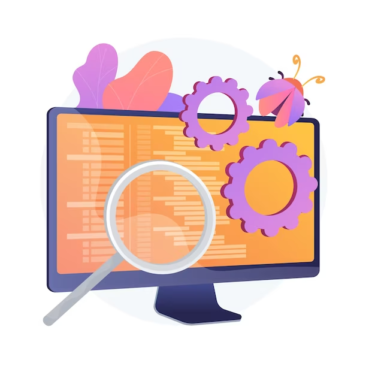In today’s interconnected world, remote management has become an indispensable aspect of various industries and sectors. It allows organizations to oversee and control their resources, systems, and operations from a distance. In this comprehensive guide, we’ll delve into the concept of remote management, its significance, and how it has evolved over the years.
What is Remote Management?
Remote management, often referred to as remote monitoring and management (RMM), is a set of practices and tools that enable administrators and IT professionals to oversee and control devices, systems, networks, and applications from a remote location. This technology has transformed the way businesses operate, providing them with the flexibility and efficiency needed to thrive in today’s competitive landscape.
Evolution of Remote Management
The concept of remote management has evolved significantly, thanks to advancements in technology and the growing demand for streamlined operations. Here’s a brief overview of its evolution:
- Early Remote Control: In the early days of computing, remote management primarily involved simple tasks like shutting down or restarting a computer remotely. This was often done through command-line interfaces;
- Remote Desktop: With the advent of graphical user interfaces (GUIs), remote desktop solutions emerged, allowing administrators to access and control a computer’s desktop remotely. Tools like Microsoft’s Remote Desktop Protocol (RDP) became popular;
- Server Management: As businesses expanded their IT infrastructure, the focus shifted to server management. Tools like the Remote Server Administration Tools (RSAT) for Windows allowed administrators to manage servers remotely;
- Network and Systems Management: With the rise of complex networks and distributed systems, remote management extended to cover switches, routers, firewalls, and other network devices. Tools like Cisco’s Network Management System (NMS) became essential;
- Cloud-Based Management: In recent years, cloud-based remote management platforms have gained prominence. These platforms offer scalable solutions for managing diverse IT environments, often including automation, analytics, and security features.
The Significance of Remote Management
Remote management offers several crucial advantages for businesses and organizations:
- Cost-Efficiency: It reduces the need for on-site IT personnel and minimizes travel expenses, resulting in cost savings;
- Improved Uptime: Proactive monitoring and remote troubleshooting help prevent downtime and reduce business disruptions;
- Scalability: It allows businesses to expand their operations without the need for a significant increase in IT staff;
- Security: Remote management tools often include robust security features to protect data and systems;
- Flexibility: Administrators can access and manage resources from anywhere, making it easier to address issues promptly.

Comparison of Remote Management Solutions
Let’s compare different remote management solutions to understand their key features and functionalities:
| Feature | Traditional Remote Desktop | Server Management Tools | Cloud-Based RMM |
|---|---|---|---|
| Accessibility | Single device at a time | Servers only | Multiple devices |
| Automation | Limited | Moderate | Extensive |
| Scalability | Limited | Moderate | High |
| Cost | Low (for single devices) | Moderate | Subscription-based |
| Security | Basic | High | Advanced |
| Monitoring and Alerts | Basic | Moderate | Comprehensive |
| Ease of Deployment | Easy | Moderate | Often complex |
Ensuring Security in Remote Management
When it comes to remote management, security is a paramount concern. As businesses increasingly rely on remote management solutions, protecting sensitive data and systems becomes crucial. Here are some key considerations for ensuring security in remote management:
1. Authentication and Authorization: Implement robust authentication mechanisms to ensure that only authorized personnel can access and manage systems remotely. Use strong passwords, two-factor authentication (2FA), or biometric authentication where applicable. Define clear authorization levels to restrict access based on roles and responsibilities;
2. Encryption: Encrypt data transmitted between the management console and remote devices. Utilize secure communication protocols like SSL/TLS to safeguard data in transit. Encryption ensures that even if intercepted, the data remains unreadable;
3. Network Security: Secure the network infrastructure to prevent unauthorized access. Employ firewalls, intrusion detection systems (IDS), and intrusion prevention systems (IPS) to monitor and protect against potential threats. Regularly update and patch network security components to address vulnerabilities;
4. Remote Device Security: Ensure that remote devices are secure. Implement endpoint security measures such as antivirus software, anti-malware solutions, and regular patch management. Educate remote users on security best practices to reduce the risk of compromise;
5. Secure File Transfers: When transferring files remotely, use secure file transfer protocols like SFTP (SSH File Transfer Protocol) or SCP (Secure Copy Protocol). These protocols offer encryption and secure authentication, preventing unauthorized access to transferred files;
6. Monitoring and Auditing: Continuously monitor remote management activities and maintain detailed logs. Regularly review logs for suspicious activities and conduct security audits to identify vulnerabilities. Implement alerting mechanisms to notify administrators of potential security incidents;
7. Compliance: Ensure that your remote management practices comply with relevant regulations and industry standards. Depending on your industry, you may need to adhere to data protection laws, like GDPR or HIPAA, which have specific requirements for remote data access and management;
8. Regular Updates and Patching: Keep all remote management software and tools up to date with the latest security patches. Vulnerabilities in outdated software can be exploited by attackers. Establish a process for regular updates and patching;
9. Disaster Recovery: Develop a robust disaster recovery and data backup plan. In case of a security breach or system failure, having a backup ensures minimal data loss and downtime;
10. Employee Training: Provide comprehensive cybersecurity training to employees involved in remote management. Educated employees are more likely to recognize and respond to security threats effectively.
By incorporating these security measures into your remote management strategy, you can mitigate risks and ensure that your business operations remain secure even in remote environments.
Conclusion
Remote management has evolved into a vital tool for businesses and organizations looking to streamline their operations, reduce costs, and enhance efficiency. Whether you’re managing a small network or a large, distributed IT environment, choosing the right remote management solution is crucial for your success. Embracing modern, cloud-based RMM platforms can provide the scalability, security, and automation needed to stay competitive in today’s dynamic business landscape.
Efficient remote management is no longer a luxury—it’s a necessity in a world where remote work and digital transformation are driving forces. Stay ahead by adopting the right remote management strategy for your organization.
FAQ
Remote management refers to the ability to control and monitor computer systems or networks from a remote location. It’s crucial because it allows businesses to streamline operations, troubleshoot issues, and provide efficient IT support without the need for physical presence, saving time and resources.
While remote management can enhance security through regular updates and patching, it also presents security challenges. It’s essential to implement strong security practices, such as using encrypted connections and multi-factor authentication, to safeguard against potential threats.
Yes, remote management is a valuable component of disaster recovery planning. It allows IT teams to remotely access and restore systems in case of data loss or system failures, minimizing downtime and data loss.
To maintain data privacy and compliance, implement strict access controls, data encryption, and regular security audits. Ensure that your remote management solution adheres to relevant industry regulations, such as GDPR or HIPAA, if applicable.









